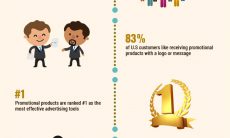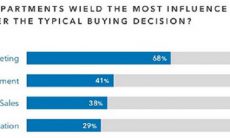Following my last blog on lead qualification, I received some great comments and several questions as to whether lead qualification differs for trade show leads. Yes, it does, and here is a revision of my last blog specifically addressing trade show lead generation and qualification.
Lead qualification is one of the primary jobs for B2B marketers, and a great deal of time and money is spent on this step of the sales cycle. This is particularly true for trade show marketers as the primary reason for exhibiting at shows is lead generation, not qualification. Recent studies by a number of firms, including Exhibit Surveys and Center for Exhibition Industry Research (CEIR), identify lead generation at 80-85% as the reason that companies exhibit at trade shows. This is closely followed by branding and customer engagement. We all know this!
But what happens after an individual visits a booth, and has their badge scanned or their information recorded in some other way by the exhibitor? While these individuals are often called “leads,” they are not. They probably should be termed “inquiries,” or “prospects.” Therefore, with rare exception, the next step is lead qualification; as most interactions at the booth are short, and do not adequately qualify the individual as to their true level of interest and/or ability to buy the products or services being promoted.
This is particularly important for trade show marketers, as not only are there many “leads” from a successful show, but the ability to prove an initial ROI is dependent on how many qualified leads came from the show, and not how many people visited the booth. This is one of the most challenging jobs any B2B marketer faces as the problem simply is:
- How do we follow-up hundreds if not thousands of “leads” before the individual forgets they even visited our booth ?
- How do we do this with limited time and resources?
Unfortunately, I don’t have one silver bullet to solve this quandary, but I do have 5 best practices that will help qualify more leads from among the inquiries and increase the ROI. Better yet, I’ll be able to answer that dreaded CFO question – “so what did we get for all that money we spent at that (insert name of trade show) trade show?”
5 BEST PRACTICES OF TRADE SHOW LEAD QUALIFICATION
- Speed Kills The Competition
Any trade show marketer faces two competitive issues:
- The first issue is how to separate our company from all the other booths the attendee visited? Depending on the size of the show and how active the attendee was at walking the show floor, they might visit 20 – 30 or more booths. The comment often heard from these attendees after the show is “I can’t remember the booths I visited, as it’s all a blur.” That’s the trade show clutter problem marketers’ face.
- The second issue is how can I beat my direct competition, assuming the individual has also visited them? Individuals with a serious buying interest will seek out all companies who offer the product or service they are interested in, and that means your competition!
To win both competitions, the faster the booth visitor receives a contact (either email or text), the more likely they will not only remember their visit, but also be even more impressed with your company. Therefore, at the end of the day or show, send each visitor an automatic email or text message thanking them for visiting the booth and predicting a further follow-up. This speed of follow-up will go a long way to winning against both competitive issues.
2. Don’t Spin Your Wheels
At the end of most trade shows, a large number of booth visitor’s badges have been scanned, and some information may even have been recorded in a CRM system (or other method) to record potential leads. But the actual amount of qualifying information is usually not satisfactory to sort the potential leads from the unlikely leads. This problem is even more acute when the in-booth promotions, demonstrations and/or shows were compelling to a large number of attendees, and drew many of them into the booth. While no definite industry statistics are available on this, likely only 10-20% of booth visitors are potential qualified leads, if that many. So the question becomes how to sort out the best potential leads from the rest before initiating an expensive and time consuming lead qualification process?
Here’s a best practice to institute. You have a good idea of who the best market segments are either due to customer profiling and/or input from product, marketing, and sales managers. The first level targeting matrix is usually industry code (SIC or NAICS) and company size. This matrix is frequently referred to as the “sweet spots” for marketing. Yet, many trade show lead qualification efforts do not first distinguish best prospects from others, and spin their wheels on non–likely prospects.
To separate the likely leads from the unlikely, immediately following the show send the entire list of booth visitors to an outside firm who can enhance the list with industry code and company size, and return the enhanced show database. From this profiling step, a separation of your best potential market segments can be accomplished. This process can be accelerated by working with the data firm beforehand to establish your best prospect profile so the resulting enhanced list is divided into these two segments upon its return.
The subsequent telemarketing or follow-up lead qualification process will be more cost effective by simply cutting down on the number of prospects to call. For other prospects that do not fall into any sweet spot, an email follow-up is sufficient assuming it contains an offer for response that might help in further qualifying them for a telemarketing call.
There is one caveat to add to this best practice. Be sure that the data firm knows B2B data, as it is far more difficult to match and profile than consumer data. Many data firms think they can do it, and in fact they cannot, and the resulting match rates will be very low. Average B2B match rates are, at best, in the 70-80% range, so don’t expect 100%.
3. Know Who You’re Calling
Even though you may have the registration information on the attendee list it does not define who the company is and what they do. The outbound telemarketer is therefore faced with a blank page of information, and begins the qualification script somewhat cold. Only on about 1 or 2 of 10 lead qualification calls I receive does the caller know anything about my company. As a result, my responses are rather curt (sorry callers), as I feel this is a waste of my time. This lack of homework does not lend itself to effective and efficient lead qualification.
Here’s why this matters, and it certainly is critical when calling managers and senior level executives who make purchase decisions. It is well accepted that senior executives expect that you will have done some research on their company that includes, but is not limited to, visiting their website. The more you demonstrate your knowledge about their company and industry, the more they will open up and willingly answer the qualification questions.
4. Do Progressively Qualify
When beginning a lead qualification process, the tendency is to attempt complete qualification during the first call. One of the failures of BANT (yes, I was at IBM) was attempting to answer the four qualification criteria during the first contact. As a result, many potential leads were lost due to the inability or resistance of the individual to answer the Budget, Authority, Need, and Timing questions. Frequently, the individual just didn’t know these answers, and were then scored “not qualified”.
If you are using BANT, or a variation of this lead scoring model, don’t attempt to determine the answers to these questions too quickly. In fact, any of the qualifying criteria might take a period of time before an accurate answer can be given by the individual.
The initial ROI of exhibiting at trade shows is how many qualified leads came from the show, and the tendency is to try and arrive at this number too quickly to justify the show’s budget. Don’t speed this process up unnecessarily, as leads will be lost if you do.
5. Don’t Ditch Old Trade Show Lead Lists
It’s only natural for marketers to strive to generate new leads by attending multiple trade shows. In fact, the average number of shows a company participates in is 10 per year according to CEIR. But at best, only 10% of qualified leads convert to sales, and thus 90% or more do not! In addition to buying from a competitor other reasons exist for lack of sales conversion, and the big one is postponement of the decision and/or no decision due to long buying cycles. If the sales staff hears that the timing is “down the road” or some other reason for a “no decision,” they will likely move on and drop the lead. Some studies have shown that as much as 30-50% of leads do not convert for these reasons, but eventually do buy.
Therefore, to paraphrase an old axiom – “where there is smoke there might be fire,” old lead lists from trade shows from the past 12-24 months should not be filed or tossed. Continue to use them for other outbound lead generation campaigns, as they will likely be more responsive for several reasons than any other type of rented list. There are a number of lead nurturing software systems in the market for just such a job.
Trade show budgets are the #1 expense category for B2B firms and consume an average of 20% of a firms total marketing budget. Yet this category is one of, if not the most difficult, to measure results and justifies repeating. Have you ever been in a yearly budget meeting when the trade show budget was questioned and/or attacked? I have, and it is difficult to provide enough measurable results in the face of these questions. Unfortunately, the defense of “if we don’t exhibit they will think we’re out of business” is too often used. This type of justification is a losing argument in these days of data-driven marketing and measurement.
What’s needed are more proof points of value created by exhibiting at trade shows, and that starts with the number of qualified leads. The preceding 5 best practices to deliver more qualified leads are part of the measurability answer. Follow them and see your results increase!
Here’s a paraphrasing of the 5 best practices:
- Follow-up FAST
- Focus on the most promising prospects
- Do your homework before qualifying
- Don’t rush the buyer
- Squeeze more out of each show’s list
The result will be more sales, and the improved ability to answer that dreaded CFO’s question – “so what did we get for all that money we spent at the show?”







